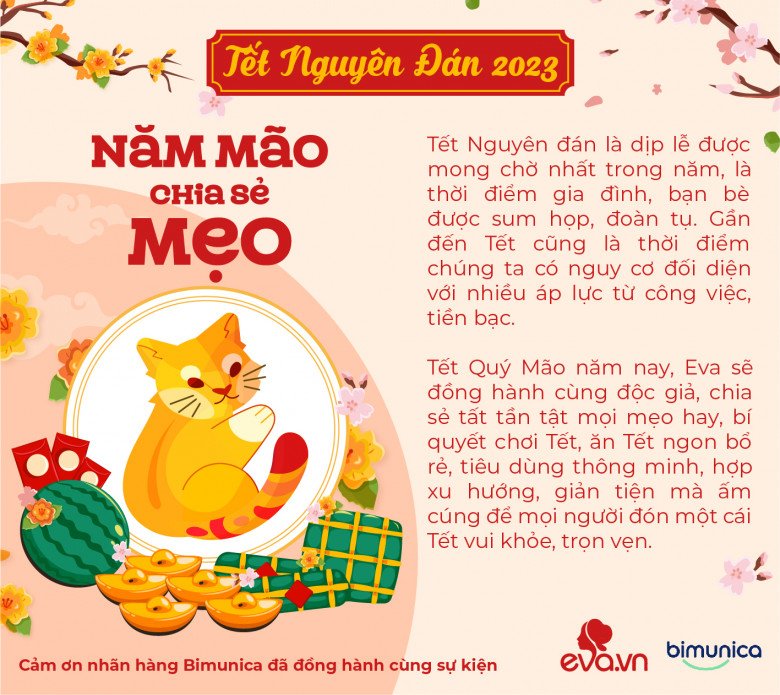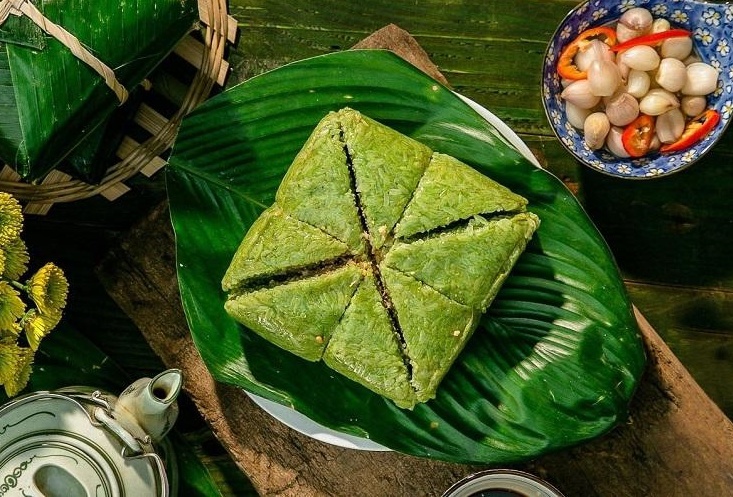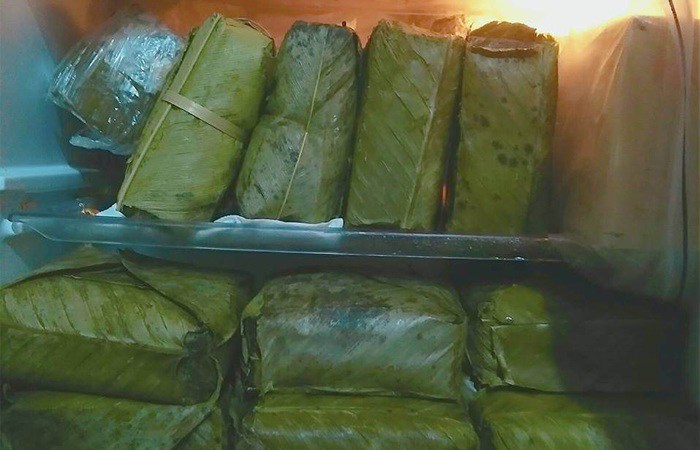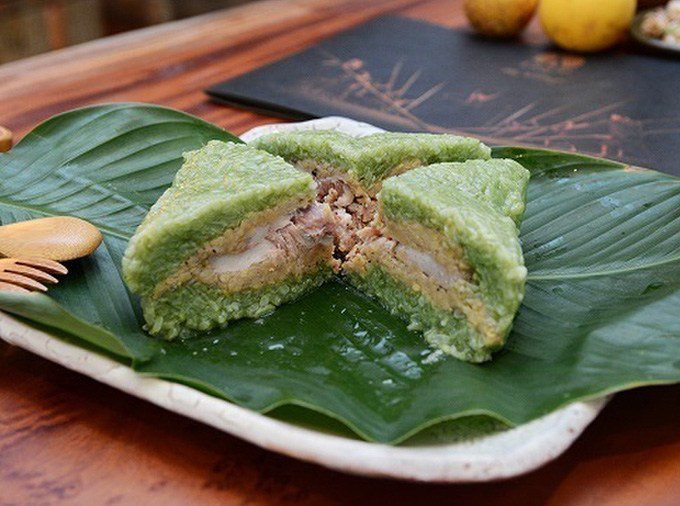
The Lunar New Year celebrations in Vietnam are incomplete without the presence of Banh Chung, a traditional square-shaped sticky rice cake. Banh Chung is more than just a delicacy; it symbolizes the gratitude towards one’s parents and the spirit of sacrifice, unity, and love within the family, as depicted in the legend of Banh Chung and Banh Day.

As a result, starting from the 25th day of the lunar month, families come together to prepare this special dish. They carefully select the finest ingredients, including sticky rice, mung beans, pork belly, and dong leaves, to create the perfect Banh Chung. For those who lack the space, time, or equipment to make the cakes themselves, it is common to place orders with those who specialize in making them.
However, it is customary for families to make more cakes than they need, intending to share them with their loved ones and children after the holidays. The challenge arises as the pork and mung bean filling doesn’t have a long shelf life, especially during the post-holiday period when the northern region experiences high humidity, creating an ideal environment for bacterial growth, leading to rapid spoilage.
Therefore, proper storage methods are essential to prolong the freshness and maintain the delicious taste of Banh Chung.
Storing Banh Chung in the Refrigerator
In addition to preserving meat, seafood, vegetables, and other perishables, the refrigerator can also effectively store Banh Chung.
– Chilling in the Cooler:
To maintain freshness, the ideal temperature range for Banh Chung in the cooler is between 5-10 degrees Celsius. When ready to eat, simply steam or fry the cake. The flavor and texture remain unaffected by the refrigeration process, ensuring a soft and fragrant treat.

– Consume the cake in portions, wrapping the remainder in food-grade plastic wrap and returning it to the cooler. Regularly inspect the cake for any signs of mold during storage.
– Alternatively, you can extend the shelf life by placing the cake in a vacuum-sealed bag before storing it in the cooler.
Freezing:
– While the cooler can prolong the life of Banh Chung, it won’t prevent it from eventually spoiling. For long-term storage, consider freezing the cakes and then steaming or frying them before consumption.
Storing Banh Chung in a Well-Ventilated Area
After boiling Banh Chung, it is essential to drain the water properly. Square-shaped Banh Chung is typically weighted down to expel excess water, while cylindrical Banh Tet is hung up to dry. Ensuring the cakes are adequately drained prevents them from becoming soggy and susceptible to early spoilage.

To further extend the shelf life, ensure the dong leaves used for wrapping are thoroughly cleaned and dried. During the holiday season, store the cakes in a dry, well-ventilated area of the house, avoiding damp conditions that promote bacterial growth. However, if the post-holiday weather is unusually warm, it is advisable to store the cakes in the refrigerator, as they will only last about three days at room temperature before turning sour.
Here are some additional tips from experts:
– Avoid over-preparing Banh Chung, as it may lead to waste if not consumed promptly.
– Do not consume cakes that show signs of mold, as it can be detrimental to your health. If you notice white mold or a sour smell, it indicates that the cake was improperly wrapped, allowing mold to form. In such cases, it is best to discard the entire cake rather than attempting to salvage a portion of it.
|
For reference, here are some tips for frying Banh Chung without soaking up too much oil: Thickness of the Banh Chung Slice When frying Banh Chung, avoid cutting it too thin or too thick. Thin slices tend to burn quickly, while thick slices may result in uneven cooking and a less appealing texture. As Banh Chung and Banh Tet are typically stored in the refrigerator after the holidays, there is no need to use lard for slicing. You can easily cut them into portions using a knife and then remove the leaves. Using a Non-Stick Pan Banh Chung has a sticky texture, so using a non-stick pan will make frying much easier. Ensure you don’t overcrowd the pan to prevent the slices from sticking together. Amount of Oil While deep-frying is a common technique to achieve a golden, crispy exterior, it is not necessary for Banh Chung. A moderate amount of oil is sufficient, as the slices are of a standard thickness. Temperature Control Start by coating the pan with a thin layer of oil and heating it up. Then, add the Banh Chung slices, initially keeping the heat at a moderate level to allow even cooking. Towards the end, increase the heat to give the slices a golden, crispy finish. This higher temperature also prevents excess oil absorption. Once the slices are ready, remove them from the oil and place them on a paper towel to absorb any excess grease. Enjoy while still warm. Note: Avoid flipping the slices too frequently, as this may cause the filling to break apart.
Banh Chung is best enjoyed with pickled onion, salted chili, or fermented vegetables on the side. |







































